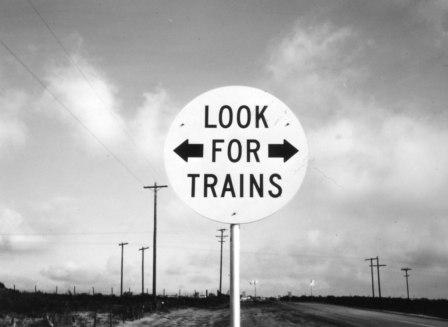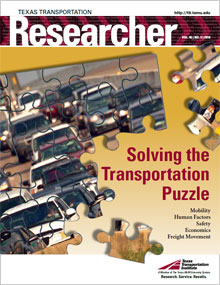Celebrating 60 Years of Innovation: A history of saving lives, time and resources
The original 1950 charter of the Texas Transportation Institute (TTI), given by the Texas A&M Board of Directors, charged the Institute with enlisting the broad resources of the college in all forms of transportation research, while giving students the opportunity to study and work in the transportation profession. This agreement solidified the Cooperative Research Program between the then-Texas Highway Department and TTI. Over the last six decades, TTI has provided accurate and timely research to address the state and nation’s most pressing transportation concerns. TTI research recommendations have consistently delivered results to its research sponsors — now numbering more than 200 annually around the globe. The world has been transformed since 1950. Today’s transportation challenges are magnified many times over in size, scope and importance to our economy and quality of life. The need for results-oriented transportation research has never been greater.
Human Factors and Roadside Safety


Left: Texas A&M University Associate Professor Emeritus Rodger Koppa, one of the pioneers of human factors research at TTI, specialized in the design of adaptive equipment for disabled drivers. Hundreds of disabled citizens have benefited from his research over the years.
Right: Dr. Teddy J. Hirsh’s research team invented the “Texas Crash Cushion” in the 1960s. Fatalities due to collisions with concrete abutments were completely eliminated in Houston, going from 27 in seven years to none in the two years following its installation on Houston freeways. Here, Hirsh and his team examine a successful crash test with then-Secretary of Transportation Alan S. Boyd and his wife.
Economics and Freight Movement




Top Left: (left to right) In this photo from 1968, Texas A&M President Earl Rudder, Under Secretary of Transportation Everitt Hutchinson, Dean Fred J. Benson and State Highway Engineer Dewitt C. Greer look at a model used to study various types of grade crossing situations.
Top Right and Bottom: Early economic and freight studies at TTI focused on estimating future needs of the trucking, rail, water and airline industries; improving safety at rail grade crossings; and developing the Interstate Highway System.
Mobility


Top Left: Charles Blumentritt (seated) discusses traffic programming using a then-state-of-the-art IBM 7094 computer. Standing left to right are Charles J. Keese, Charles Pinnell and Joe Wright.
Right: TTI researchers began their quest for better freeway operations in 1961 through work on Houston’s Gulf Freeway. This project was one of the first in the country to use time-lapse and aerial photography to develop mathematical models for use with new technologies and techniques such as ramp meters and computer-driven traffic surveillance and control centers.
TTI’s Former Directors




Left to Right: Fred Benson, Director, 1955-1962; Jack Keese, Director, 1962-1976; Charley Wootan, Director, 1976-1993; and Herb Richardson, Director, 1993-2006.
